This year permanently changed the cryptocurrency ecosystem as it grappled with last year’s collapse of FTX, Alameda Research, BlockFi, Voyager, Celsius, Babel Finance, Three Arrows Capital, and more.
While still reeling this year, we also saw important cases against Sam Bankman-Fried, Alex Mashinsky, Do Kwon, Changpeng Zhao, and Binance. The reverberations of these events permanently altered the industry.
Here’s a review of how top stablecoins like Tether, Circle, and TrueUSD have fared in 2023.
Tether
Tether took on an even more dominant position in the stablecoin ecosystem in 2023. Despite years of criticism aimed at management, Tether has continued to grow. Its market cap increased by approximately $24 billion, or more than 35%.
Tether has been able to take advantage of the higher rate environment to improve its claimed financial position. The firm’s stated excess reserves increased from around $1 billion at the end of last year to about $3 billion at its latest assurance.
This increase in assets has allowed Tether to make investments across a variety of different industries.
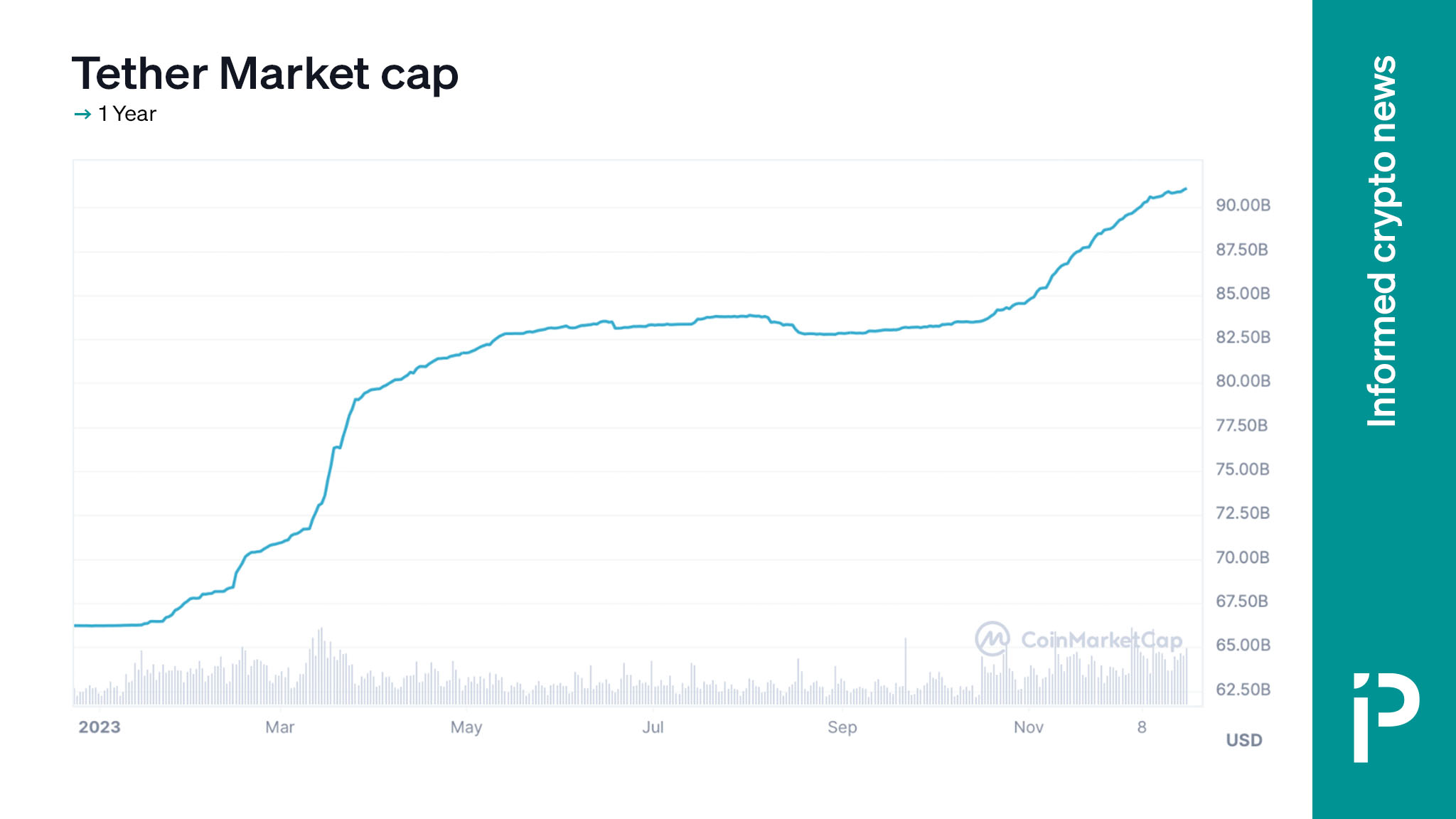
Read more: Tether says it makes money but can’t ditch loans
Tether historically has attracted the attention of law enforcement regulators, previously settling with the New York Attorney General and Commodity Futures Trading Commission (CFTC), as well as several years ago reportedly receiving target letters related to bank fraud.
This year, Tether has worked on improving its relationship with law enforcement. Onboarding the Secret Service and the Federal Bureau of Investigations to its platform in 2023 enabled the agencies greater insight into how the firm operates.
Circle
USDC, the stablecoin issued by Circle, has had a much more challenging year than Tether. The market cap of USDC has significantly contracted, falling from approximately $44 billion to $25 billion, or almost 45%.
There were a number of factors that contributed to this fall, but it’s crucial to focus on the USDC de-peg that followed Silicon Valley Bank’s failure. As Circle had lost access to a variety of its other banking partners, it had a significant share of its reserves at Silicon Valley, and that entity’s failure threatened the stability of the stablecoin.
Circle has also not seen the same increase in excess reserves that Tether has, recording around $140 million at the end of last year and about $50 million at the most recent attestation.
Circle’s leadership has reacted to this shrinking market position by lashing out at its competitors, accusing Tether of “counterfeiting” the US dollar.
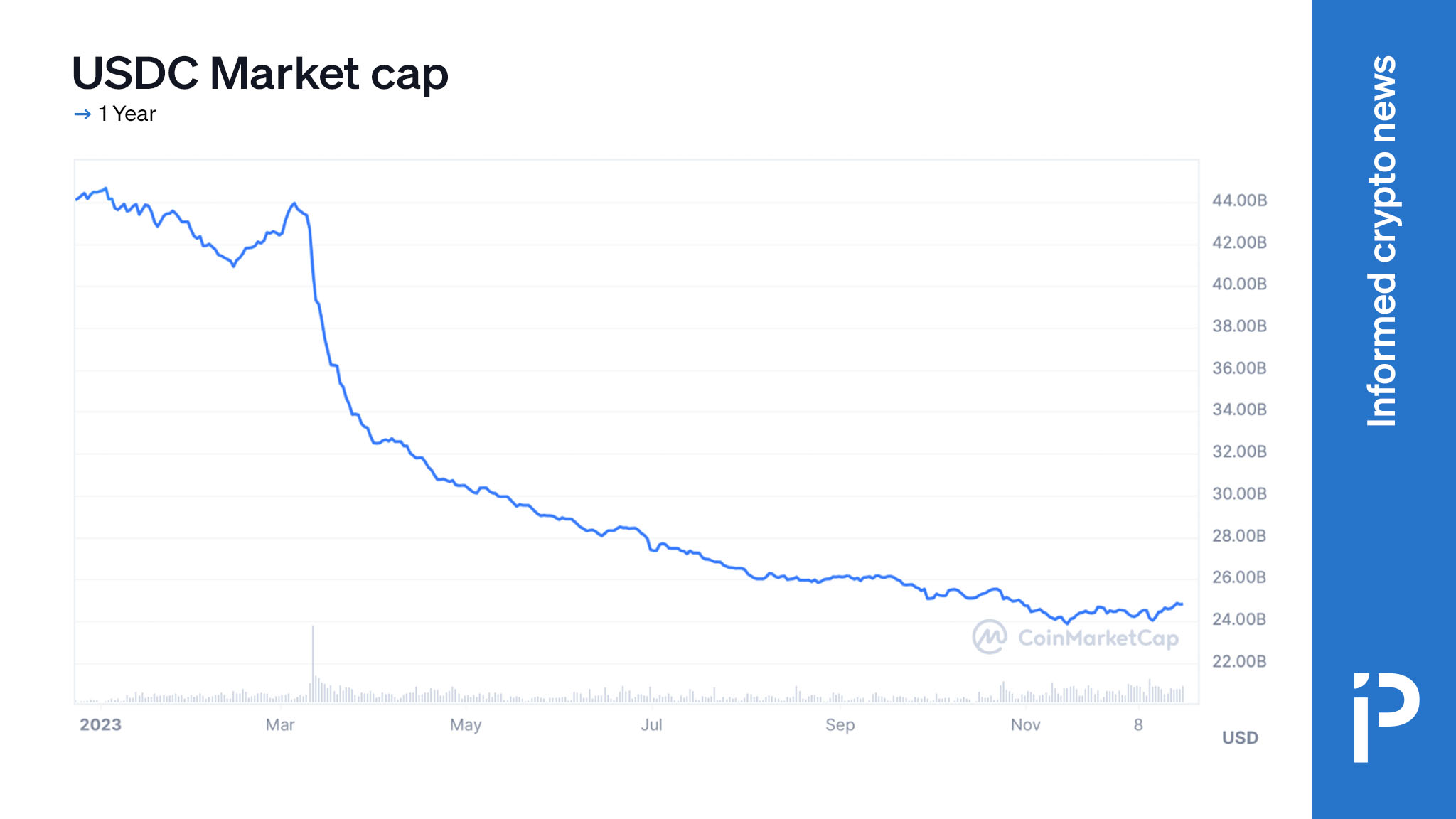
Read more: The beef between Circle and Tether
Binance USD
Binance USD (BUSD), the Binance-branded stablecoin launched in collaboration with Paxos, has had a brutal year since it was effectively shut down in February.
The New York Department of Financial Services prevented Paxos from issuing new BUSD tokens in February, highlighting the mismanagement of Binance Peg BUSD.
Binance had failed to appropriately keep the BUSD backing BUSD on Binance chains separated, potentially leaving the Binance Peg BUSD without appropriate reserves.
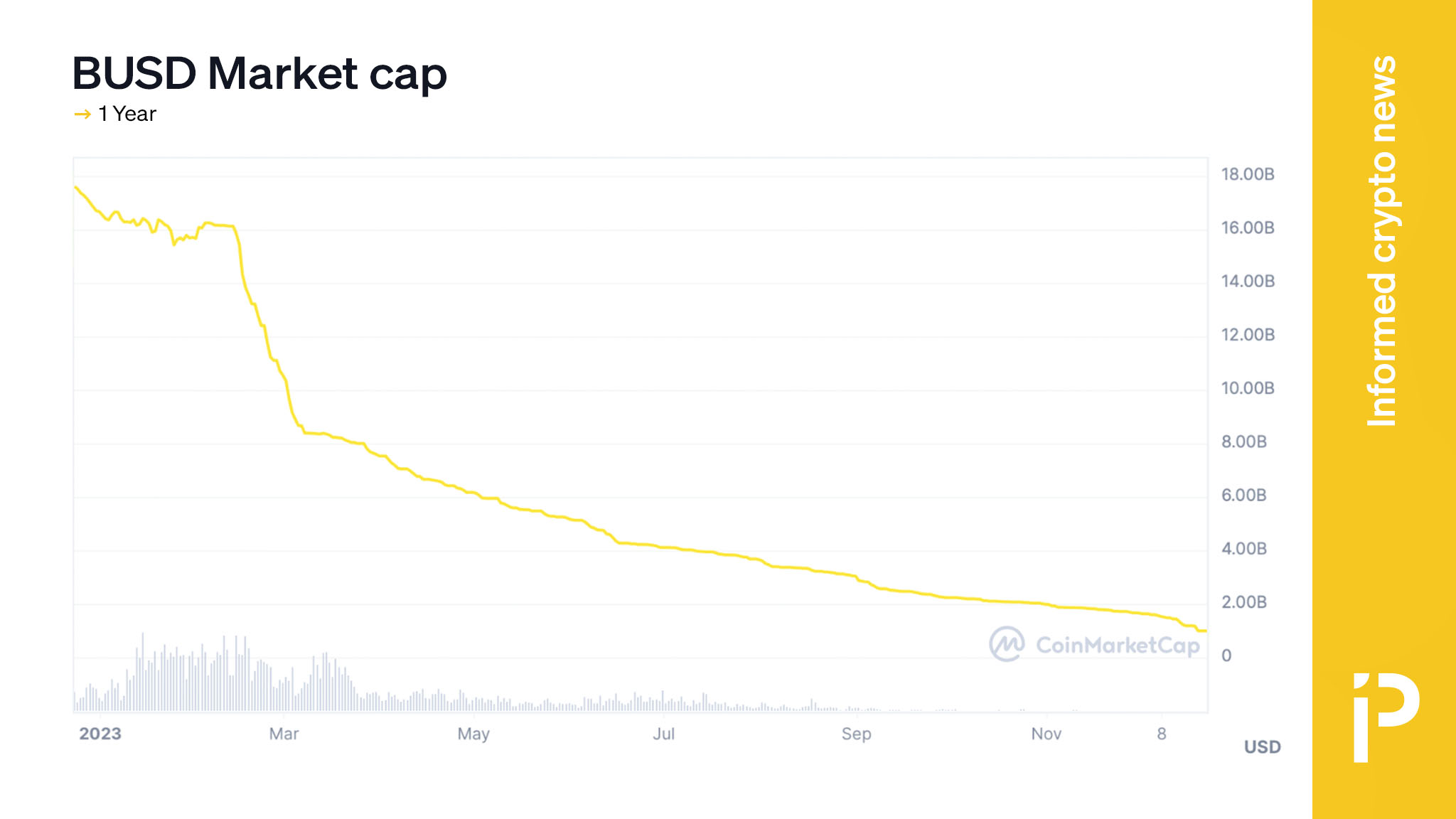
Read more: Binance’s stablecoin BUSD hasn’t always been 1:1 backed, report
Since Paxos was ordered to stop issuing the token, its market cap has collapsed from $16.4 billion to approximately $1 billion, a fall of almost 94%.
Paxos’ own stablecoin Pax Dollar somehow still has a smaller market cap than BUSD, totaling only $370 million.
TrueUSD
The market cap of TrueUSD, a stablecoin that Techteryx issues, rose from about $750 million to about $3.5 billion at its peak before falling to about $2.4 billion.
TrueUSD has grown in part thanks to Binance adopting TrueUSD as one of its ‘zero-fee’ trading pairs, a fact that immediately helped its growth.
TrueUSD’s more important role in the ecosystem has also highlighted some of the strangeness surrounding its management.
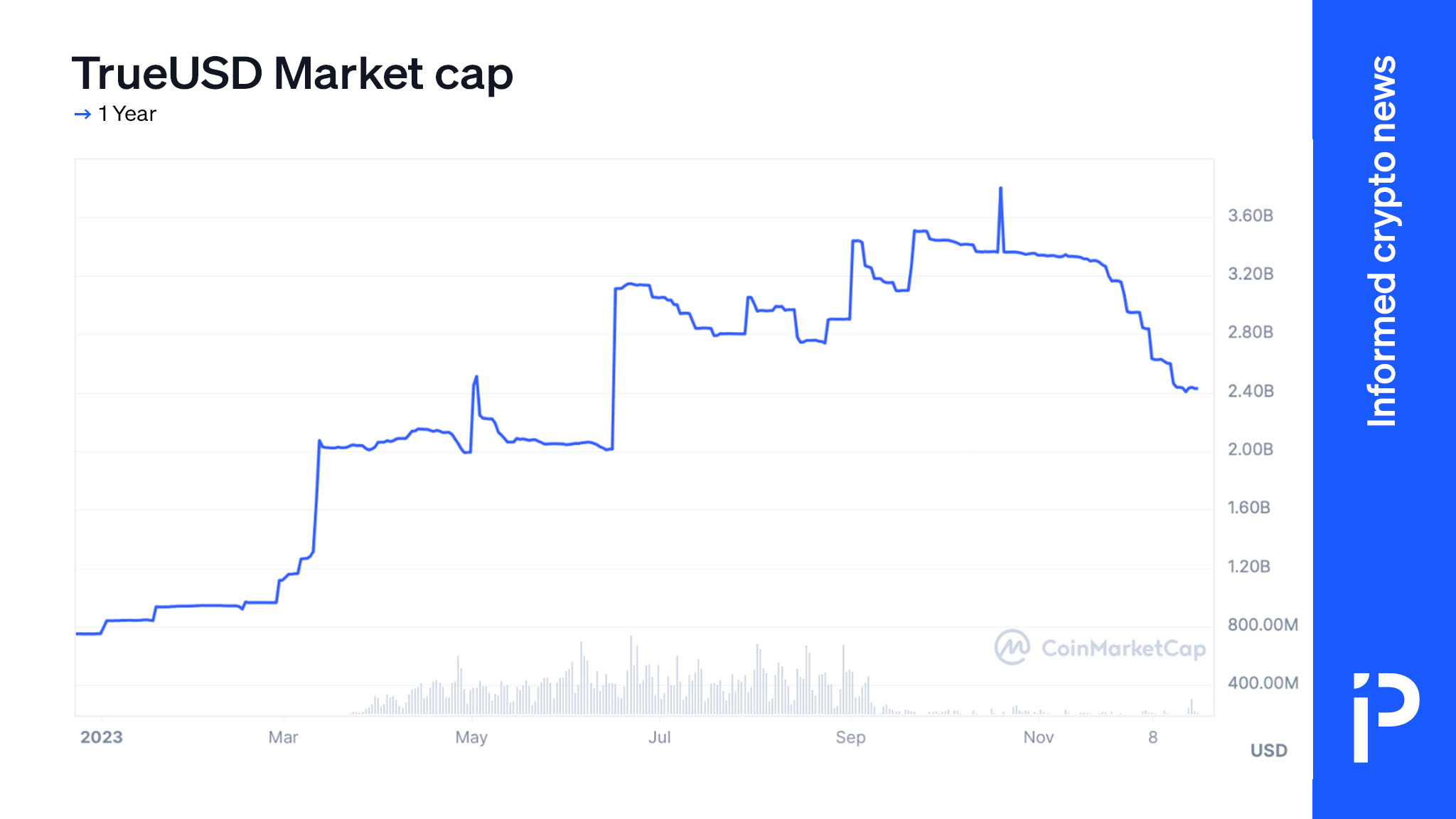
Read more: The Context: Stablecoins get a little help from their friends
Techteryx acquired TrueUSD in 2020, denying any connection to Justin Sun at the time and emphasizing that Techteryx would not be in charge of managing the private keys. Eventually, Sun would be listed as an ‘Asia Market Advisor’ on TrueUSD’s website and described himself as a “partner market maker” for the token.
In May of this year, Archblock acknowledged that private keys for TrueUSD were transferred to the Techteryx team.
Since then a pro se lawsuit filed by the former chief of TrustLabs (the firm previously behind TrueUSD), Daniel Jaiyong An, more clearly alleges that Sun tried to acquire TrueUSD in a deal negotiated with Can Sun, who would later serve as counsel for FTX.
First Digital USD

First Digital USD (FDUSD) is a stablecoin launched by First Digital Trust, one of the custodians of TrueUSD. Additionally, the fact that it is now a “zero-fee” pair on Binance has accelerated its growth, overlapping with the recent movement away from TrueUSD.
FDUSD launched this year, growing to a total market cap of approximately $1.8 billion.
Earlier this year, Bloomberg also reported that Binance was collaborating with trading firms and stablecoin issuers to come up with alternative structures to hold collateral for the token, and First Digital USD launched a couple months after that reporting.
USDD
USDD, a stablecoin that claims to be “algorithmic,” is the largest “algorithmic” stablecoin remaining following the collapse of Terra and Luna in 2022.
USDD started by effectively co-opting the mechanism design of Terra/Luna and promising to integrate it directly into Tron in the same manner that the issuance and exchange were integrated on the Terra blockchain.
The ‘algorithm’ for USDD can broadly be described as:
- Members of the “Tron DAO Reserve” can transform Tron (TRX) into USDD by “burning” it (not really burned, as it’s considered ‘collateral’ for USDD) and then they are issued USDD.
- Users can also access “authorized and unissued” USDD by sending other stablecoins to its “Peg Stability Module.”
- Redemptions are managed by sending USDD back to the “Peg Stability Module” in exchange for stablecoins held by the “Tron DAO Reserve.”
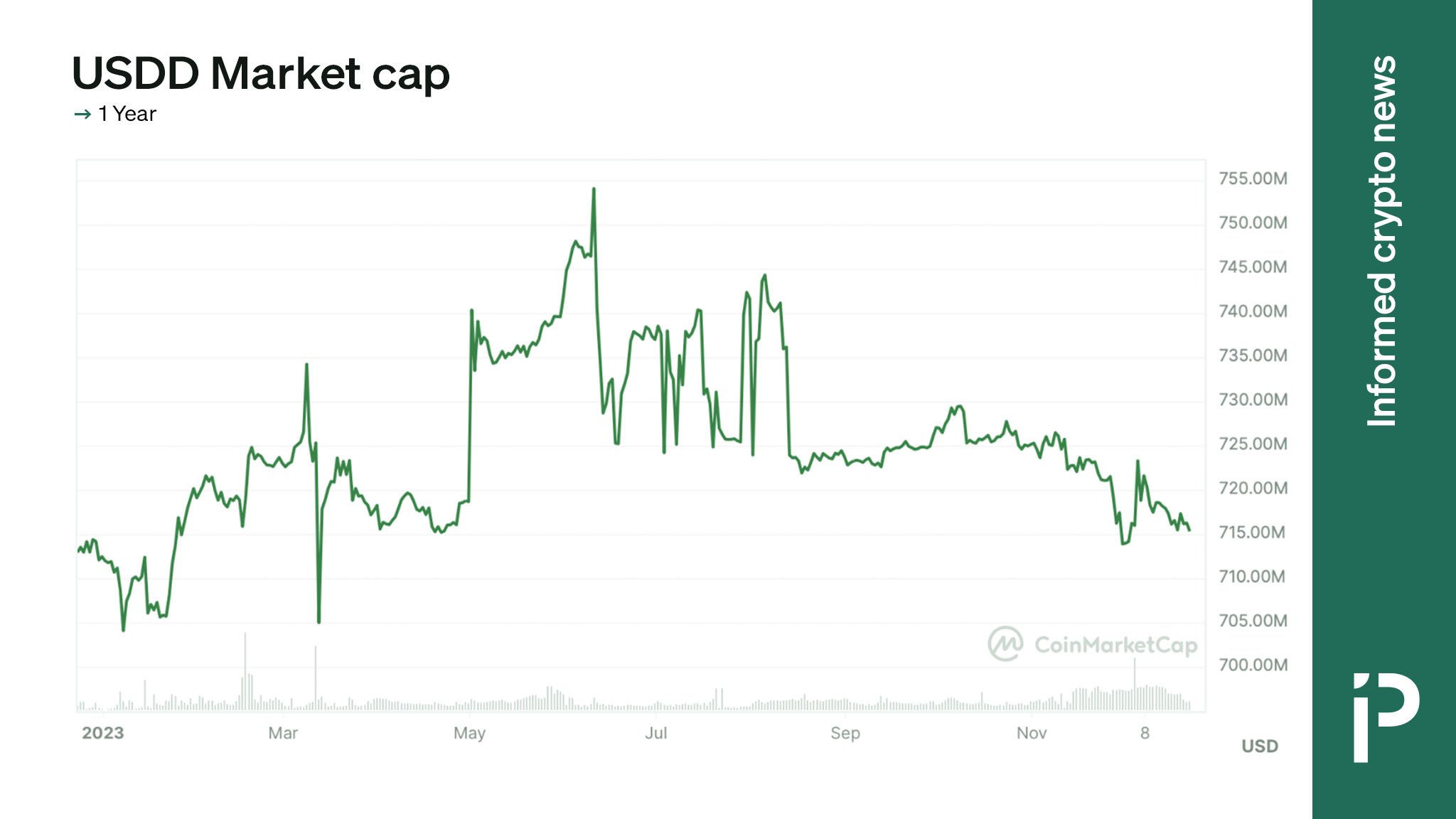
Read more: Binance delists ‘stablecoin’ AEUR after it pumped 200% on launch
The current members of the Tron DAO Reserve are:
- Amber Group (recently raised a $300 million round after the FTX collapse exposed some of its products to potential collapse)
- Poloniex (owned by Sun)
- Ankr
- Mirana Ventures (the venture arm of ByBit currently being sued by FTX for its withdrawals immediately before the collapse)
- Multichain (a bridge which has been stopped since July and apparently had its CEO, who managed all keys, arrested)
- FalconX (had approximately 20% of its assets on FTX at the time of the collapse)
- TPS Capital (that would be the Tai Ping Shan which was a Three Arrows Capital OTC desk)
The market cap of USDD has stayed roughly flat for 2023, coasting around $715 million.
Conclusion
Stablecoins continue to serve an important role in the cryptocurrency ecosystem, especially as many exchanges and firms struggle to maintain consistent access to US dollar rails.
Over the last year, important US domiciled stablecoins like USDC and BUSD have seen their market caps collapse as ‘international’ stablecoins like USDT, TUSD, and FDUSD have exploded.
Algorithmic stablecoins are effectively ignored following the collapse of Terra and Luna, with the largest remaining “algorithmic” coin seeing effectively no growth.
 protos.com
protos.com